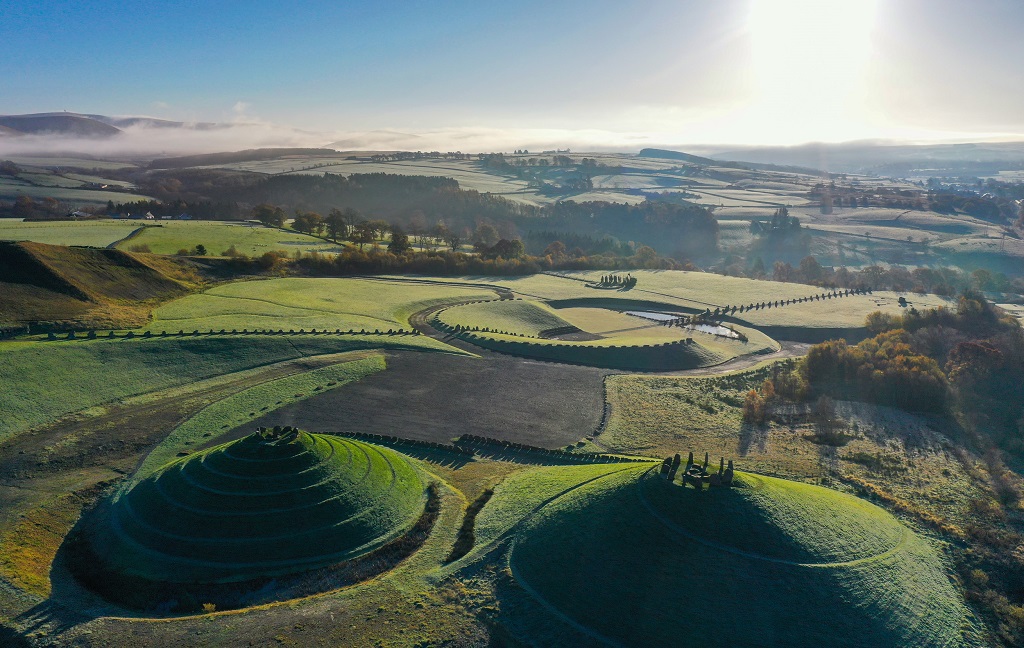When an open cast coal mine near Sanquhar in Dumfries and Galloway closed in 1980, the landowner, the Duke of Buccleuch, was left with a dilemma. What could be done with the unsightly, hazardous 55-acre scar in the landscape?
There was early pressure to return the land to agricultural use, but soon more emphasis was put on conservation, landscape renewal and recreational facilities. The Duke turned to his good friend, the renowned land artist Charles Jencks, for help. The result was the extraordinary landscape captured in the photo above by Mike Bolam. It’s known as Crawick Multiverse.
Who was Charles Jencks?
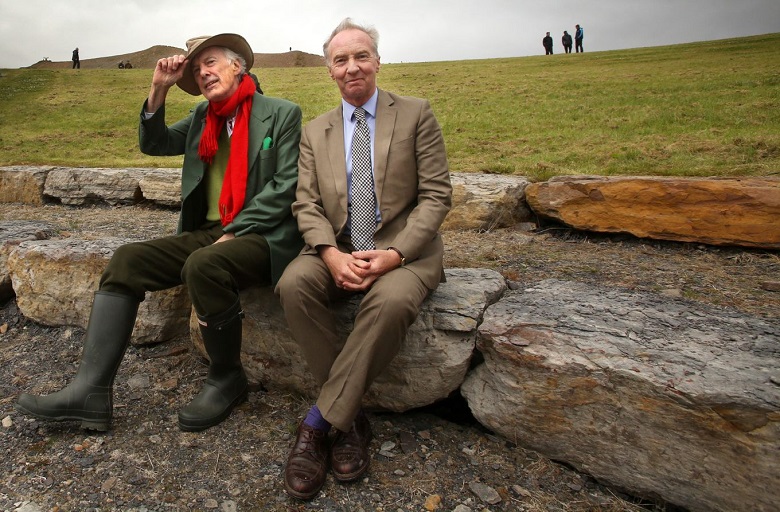
Charles Jencks with the Duke of Buccleuch (Photo: D Cheskin)
Jencks suggested some exciting possibilities for the site, building on his experience developing the Garden of Cosmic Speculation at his home in Portrack, 20 miles away.
This was just one of the remarkable outdoor spaces Jencks had created during his career as an internationally renowned landscape designer, cultural theorist (particularly of Postmodernism) and architectural historian. He’s also known for co-founding Maggie’s Cancer Care Centres, named in the memory of his second wife, Maggie Keswick Jencks. Using specially-designed landscapes, architecture and art, the centres are based close to hospitals to support patients and caregivers.
Jencks’ work can be found across the globe from India to South Korea. His other projects in Scotland include parts of Jupiter Artland in the grounds of Bonnington House and Landform Ueda outside the Gallery of Modern Art in Edinburgh. Crawick Multiverse was his final land art project and his largest completed work in the UK.
From mine to ‘multiverse’

Crawick Multiverse was constructed on the site of a former open-cast coal mine between 2011 and 2017 (Photo: Steve Chettle / ARTS UK)
In May 2012, Jencks accepted a commission to reform the damaged terrain at Crawick. He would create a landscape that would appeal visually, aesthetically and philosophically. The brief stated that existing objects and resources on site should be reused and help to inform the design.
Initial work was completed in early 2015, which Jencks described as ‘the greatest pleasure in my life’ which resulted from an old friend having ‘a coal site that ran out of coal’.
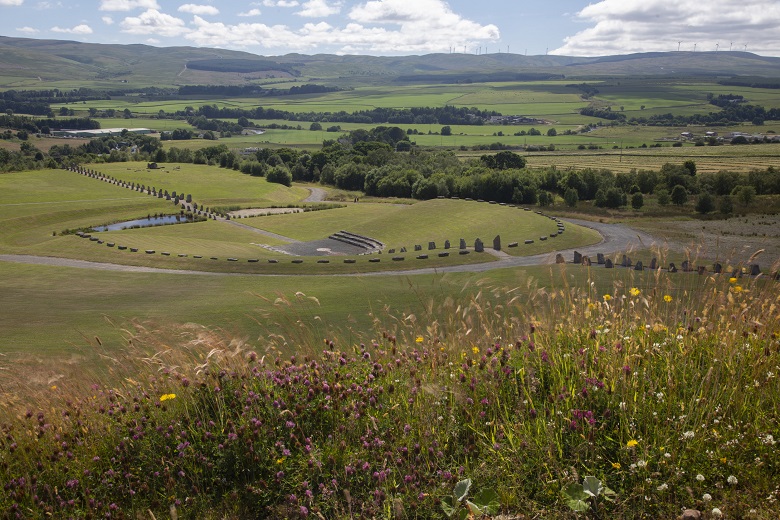
Within a few years, the old mining site was completely transformed (Photo: Mike Bolam)
The involvement and enjoyment of local mining communities in Kelloholm, Kirkconnel and Sanquhar was critical to the project’s success. It was also hoped that a new attraction would attract tourists from afar, contributing economically to the local area. Today, the Crawick Multiverse Trust operate the site as a visitor attraction, unique destination and outdoor venue.
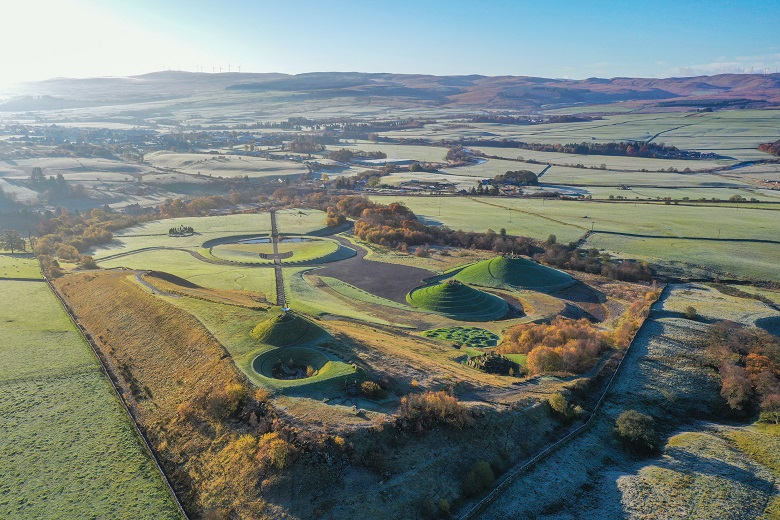
The finished Crawick Multiverse covers an area bigger than 36 football pitches (Mike Bolam)
Into the ‘multiverse’
Jencks designed Crawick Multiverse to explore cosmology, prehistory, and connections to the past through the theory of the ‘multiverse’.
Features in the landscape convey a sense of the universe and its rhythms, such as the standing stone avenue through the North-South Line. It evokes prehistoric stone monuments like the Calanais (Callanish) Standing Stones on the Isle of Lewis. Another feature, The Omphalos, signifies both the geological and mythical interior of the Earth.

The North-South Line divides the site in two and leads to the Belvedere. (Photo: Mike Bolam)
Working within the constraints of the site, the design takes its cosmic complexity, and brings it down to a human, or almost-human, scale. Jencks felt it was important for visitors to look at the world, the solar system, our galaxy and the universe as a whole.
The site is effectively invisible from the visitor centre. But it soon reveals itself to visitors in spectacular fashion. They’re encouraged to take the “low road” or the “high road” to explore the Multiverse and everything it offers. The Sun Amphitheatre sits at the heart of the site. The Belvedere, the highest point, boasts commanding views across the Nith Valley.
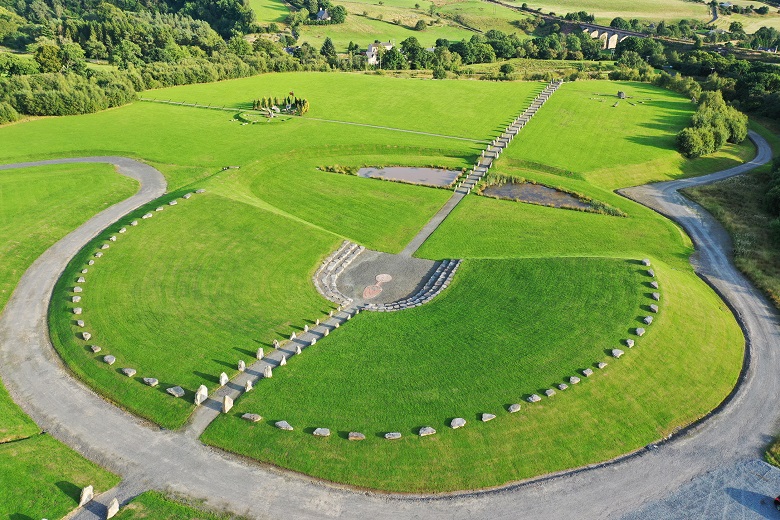
The Sun Amphitheatre (Photo: Mike Bolam)
A magnificent monument
Charles Jencks passed away on 13th October 2019. Crawick Multiverse was both his largest and final completed work, covering 22.5 hectares of land – over 36 football pitches. It’s a public monument to his career as a international land artist and a fascinating counterpoint to his intimate Garden of Cosmic Speculation.
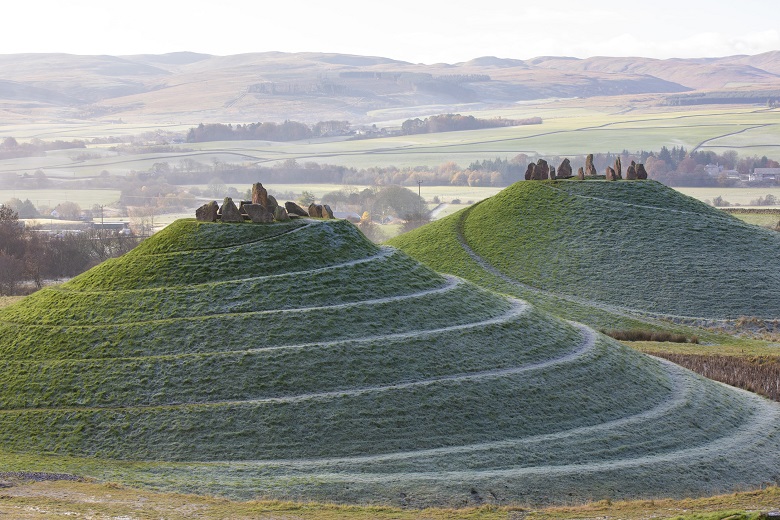
Two towering mounds represent the spiral galaxies of Andromeda and our Milky Way (Mike Bolam)
The site attracts land art enthusiasts from all over the world, as well as cosmology fans. There’s also adventure seekers, dog walkers, nature lovers and those just out for a picnic! In 2022, the Trust improved the customer experience by adding The Coalface, a small but elegant visitor centre.
Designed as a land regeneration project for public access, the Multiverse enriches the local community. It connects its visitors to both the industrial history of the area and the prehistory of the British Isles.
Mankind has spent energy and effort digging holes in the ground in search of resources for centuries, but have been remiss in ‘making good’ after such searches. Crawick Multiverse was ahead of its time as an example of Just Transition and offers a solution to the challenges brought about by open cast mining.
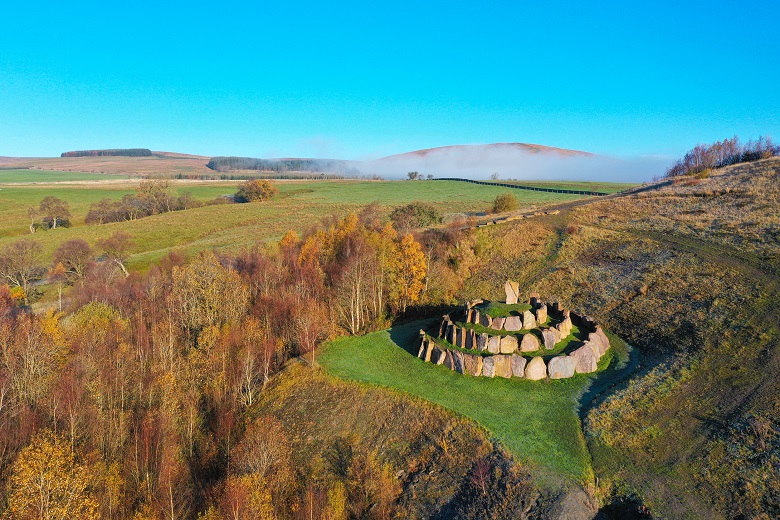
The Multiverse is a corkscrew path representing the whole ensemble of universes (Photo: Mike Bolam)
Designating Crawick Multiverse
Gardens and designed landscapes of the recent past are an important element of Scotland’s historic environment and landscape. But modern sites are not always valued as much as older sites. Through the ‘Designed Landscapes of the Recent Past’ initiative Historic Environment Scotland are taking steps to record and recognise them.
As such, Crawick Multiverse was recently added to the inventory of Gardens and Designed Landscapes. The designation report tells us how the Multiverse is significant for its ambitious scale, visual and conceptual design integrity. It’s of outstanding artistic and historical interest as an example of early 21st century land art.
Head to the the Crawick Multiverse Trust website for more details on visiting the Multiverse and to book tickets.
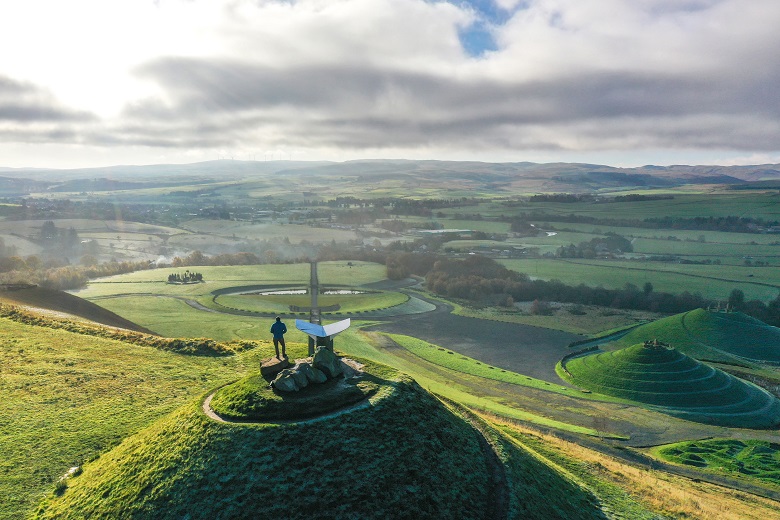
The Belvedere gives a 360º view of the surrounding countryside and settlements (Photo: Mike Bolam)
This guest blog summarises the work of Patrick Lorimer (Trustee of The Crawick Multiverse Trust) and Rob Close who recently published an article in the Winter 2023 issue of Scotland’s Garden and Landscape Heritage (SGLH) ‘Pleasaunce’ journal. Additional edits to the text and format have been made by HES.
Want more gardens and designed landscapes? Check out five amazing modern landscapes or uncover some of Scotland’s garden secrets.

